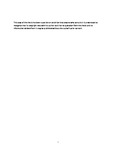Optimisation of rebreeding strategy in UK Holstein dairy cattle- a multifactorial study
| dc.contributor.supervisor | Scaife, Jes | |
| dc.contributor.author | Miller, Richard Michael | |
| dc.contributor.other | Faculty of Science and Engineering | en_US |
| dc.date.accessioned | 2016-02-18T10:44:48Z | |
| dc.date.available | 2016-02-18T10:44:48Z | |
| dc.date.issued | 2015 | |
| dc.date.issued | 2015 | |
| dc.identifier | 10420436 | en_US |
| dc.identifier.uri | http://hdl.handle.net/10026.1/4341 | |
| dc.description.abstract |
Dairy production in the UK has undergone a period of sustained increase both in number of cows held in each unit and yields per cow. Whilst much of this yield increase can be attributed to nutritional science, the production capacity of individual animals has also contributed significantly through both higher peak yields and greater persistency of production throughout lactation. This additional production has not come without cost which has manifested itself as a general decrease in reproductive performance. Although the associated lengthening of the calving interval has led to an increase in herd average days in milk, the question arises whether the flatter lactation curves observed in modern animals make the traditional targets of calving at 365 day intervals less relevant. It could be conjectured that, taking into account all of the major cost factors, extension of lactation in modern animals may be economically advantageous. This work created a bio economic model in investigation of the above question using bespoke production modelling based upon current UK production information combined with costs and other income levels relevant to the analysis period. The results were presented as income per cow per day of intercalving interval indicating daily contribution to the herd economics regardless of reproductive performance. The results indicated that the effects of poorer reproductive performance and longer voluntary waiting periods are variable and inversely proportional to increasing yields. For the highest yielding herds early resumption of breeding and conception brings considerable advantage which is driven by the differential between peak and late lactation yields. Increasing average days in milk has a detrimental effect upon production that is greater than the dilution of fixed costs over more days in the calving interval. For the lowest yielding herds the converse was shown with corresponding increases in income per day with increasing lactation length although of very low order. For all production levels analysed replacement rate was the single most important factor affecting income and, as such, indicates why fertility should be the major focus of Holstein breeding. Improved fertility would reduce both calving intervals and involuntary cull levels having a two fold positive effect upon herd economics. The voluntary waiting period was the least significant of the economic factors investigated, the results indicating variable effects by both length of voluntary waiting period and yield level. The economic significance of voluntary waiting period length increases relatively with yield however earlier rebreeding was financially advantageous across almost all yield levels. Although the financial impact of voluntary waiting period length is of low order it is the single factor which is completely in control of the herd management policy. Not withstanding welfare effects, these results would suggest that rebreeding at the earliest opportunity in high yielding animals remains the optimal breeding policy. | en_US |
| dc.description.sponsorship | National Milk Records plc | en_US |
| dc.language.iso | en | en_US |
| dc.publisher | Plymouth University | en_US |
| dc.subject | Holstein | |
| dc.subject | Economics | |
| dc.subject | Fertility | |
| dc.subject | Farming | |
| dc.subject | Dairy | en_US |
| dc.title | Optimisation of rebreeding strategy in UK Holstein dairy cattle- a multifactorial study | en_US |
| dc.type | Masters | en_US |
| plymouth.version | Full version | en_US |
Files in this item
This item appears in the following Collection(s)
-
01 Research Theses Main Collection
Research Theses Main


